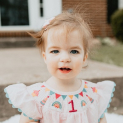Creation and Validation of Novel Cell Line Models for Alveolar Rhabdomyosarcoma
“My POST program experience was the first opportunity I had to work completely independently in the lab….. both my successes and my disappointments were my responsibility, and I became more invested in my research as a result.” –Kaoru Takasaki
Why did you choose to work in this field/on this topic?
Pediatric oncology has been a particular interest of mine since my freshman year of college, when I joined the board of An Evening with Champions. This organization produces an annual figure skating exhibition in order to raise money for The Jimmy Fund at Dana-Farber Cancer Institute. Through An Evening with Champions, I was able to meet a number of former and current pediatric cancer patients, and to hear their stories of struggle and uncertainty while witnessing their unfaltering ability to smile and enjoy every happy moment. I applied to medical school hoping to again make a difference in these children’s lives, this time as a physician.
I spent the two years between college and medical school working in a basic science laboratory at Brigham and Women’s Hospital, and absolutely loved it. Once I came to Yale, joining the Bindra Lab to work on a translational project that studies the genetic translocations in rhabdomyosarcoma therefore seemed like a natural extension of my experiences with An Evening with Champions and at Brigham and Women’s. I was lucky enough to find in Dr. Bindra a mentor who understands the draws of both research and clinical medicine, and I felt that the lab was a good fit for me.
What were some of your main achievements during your POST program experience?
My POST program experience was the first opportunity I had to work completely independently in the lab. Although I learned a number of new techniques, such as RNA harvesting, clonogenic assays, single-cell cloning, and kill curves, what was most important to me was gaining the freedom and ability to critically interpret my data. It was up to me to plan follow-up experiments and troubleshoot failed strategies; both my successes and my disappointments were my responsibility, and I became more invested in my research as a result. Through this I learned to be more efficient in scheduling my experiments and more flexible in dealing with setbacks.
From a purely project-based standpoint, I was able to make progress in creating the cell lines that will hopefully recapitulate the embryonal and alveolar rhabdomyosarcoma (ERMS and ARMS, respectively) phenotype. I began by optimizing the growth conditions for the five control cell lines I would be using, and then harvested their RNA in order to characterize their genetic profile at baseline. I accompanied this work with a review of literature to compile a list of the genes previously reported to be upregulated or downregulated in Pax3/7-FOXO1 translocation-positive ARMS; this list will be used when the RNA samples are sent for microarray analysis to provide the background against which the genetic behavior of my engineered cell lines will be compared.
After setting the groundwork, I ultimately created a U2OS clonal cell line with strong, Tet-inducible Pax7-FOXO1 expression. This expression was confirmed via transient transfection of a Tet-ON plasmid followed by Western blot. I repeated this process for U2OS Pax3-FOXO1 clones, and by the time I concluded the POST program I had generated multiple candidates to be tested for expression.
How did you benefit from being mentored during this project; what was most helpful?
My relationship with Dr. Bindra was completely unlike that which I had had with my previous PIs; I felt comfortable discussing both my successes and failures with him, and I believe I developed a deeper understanding of the basic science underlying my project as a result. Being able to seek out advice at any time also allowed my research to move forward more quickly than it might have otherwise. Additionally, my identity as a POST grant recipient signaled my interest in incorporating pediatric oncology into my future career, and accordingly Dr. Bindra was very willing to discuss his clinical experiences and allow me to shadow him in the hospital.
At this time, are you planning on pursuing a career in pediatric oncology research? If so, how did the POST experience contribute to your decision?
Although I am waiting for the third-year clerkships before I make any decisions about my specific career path, my POST experience reaffirmed my interest in research and in pediatric oncology. Pediatrics can be overlooked in research, and reading the literature, shadowing in the hospital, and connecting with my fellow POST grant recipients all showed me how much there is left to do in the field. Ideally, I would like to find a way to balance and integrate research and patient care in my career as a physician, but if there is anything I have learned so far about life, it is that very little works out according to elaborate plans.
Mentor: Dr. Ranjit Bindra
Why did you choose to be a mentor?
There is great joy in seeing the faces of students light up when they learn something new, or when they learn that we can change the course of a terrible illness like childhood cancer. In cancer research, it is easy to become overwhelmed with the seemingly endless numbers of incurable cases that we are confronted with. However, working with students helps to keep perspective, by bringing in fresh ideas and young enthusiasm.
What activities were most significant for Kaoru’s development?
Our meetings discussing various approaches to target rhabdomyosarcoma tumor cells were quite exciting, we enjoyed mapping out experiments and troubleshooting problems.

